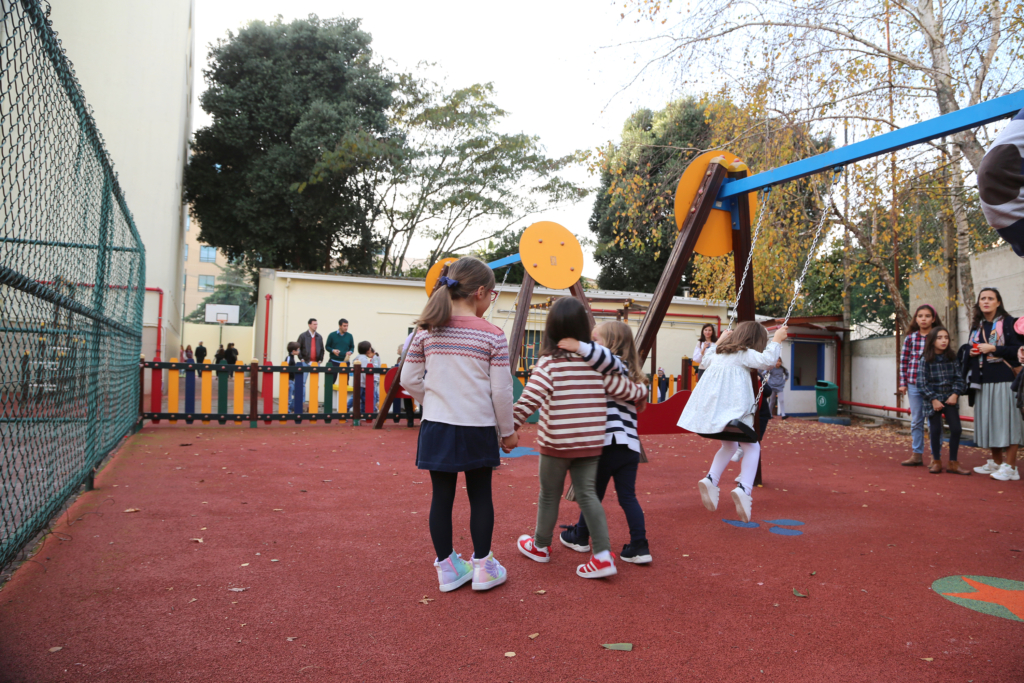Technology is not an inevitable fate. Education must guide its integration with critical thinking, participation and a vision of the future.
Children should learn programming from an early age, in a playful matter that suits their development and assesses child readiness for tech — even without screens, through physical experiences with blocks or cards.
The child’s question – “Why do I have to go to school?” – is legitimate and necessary. It reveals the urgency of rethinking the educational model: making it more relevant, interesting, engaging and truly centered on human development.
There’s a lot of talk about AI as a threat, but the real challenge lies less in the capabilities of the technology and more in human decisions about its integration. Education must not only adapt to the post-digital era – it needs to be redesigned on the basis of human values and active listening to the new generations.
Technology is not an inevitable fate. Education must guide its integration with critical thinking, participation and a vision of the future.
This was the essence of my intervention in the roundtable “Education”, part of the conference “Being Human in the Age of Artificial Intelligence: Challenges of Coexistence”, organized by the Portuguese Catholic University: listening to children and young people, involving them in the design of technology, and reflecting with them on the future we are shaping. Their voices can’t be an afterthought – they are essential in building truly human-centered AI technologies.

© Courtesy image
“There is nothing simple about human intelligence.” — Damásio
In his book “Feeling & Knowing”, António Damásio describes it as a deeply complex phenomenon, rooted in the integration of body and mind, where emotions, feelings, perception, consciousness and memory play a central role in the formation of reasoning.
At a time of accelerated digital transformation, artificial intelligence represents both a promise and a challenge for education. It is precisely when machines are gaining a foothold that we need to focus teaching on what makes us human: our emotional, and the creative and critical richness of our intelligence.
Educating for the future is not just about focusing on performance or memorization, but about preparing new generations to live with – and not under – technology. Promoting empathy, critical thinking, ethics, awareness of self and others and innovation is essential to ensure a healthy, fair and humane relationship with new technologies.
I advocate a child-centered design approach, where technology is a tool – not an end in itself – that enhances cognitive development and individual expression. On the design and creation side of technology, development teams must be diverse and multi-cultural. They must ask themselves: do we really understand the impact of what we are creating? Do we know how it shapes children’s daily lives, emotions, choices and even their sense of identity?
As for schools and educators, their role must be to cultivate genuinely human capacities, promoting co-creative, personalised and affectively meaningful processes. Humanising teaching means, more than complementing technology, guaranteeing emotional bonds, creativity, social skills, empathy, critical thinking and social and collective responsibility.
Digital literacy and computational, algorithmic thinking are fundamental skills today. Children should learn programming from an early age, in a playful matter that suits their development and assesses child readiness for tech — even without screens, through physical experiences with blocks or cards. More than using technology, it is crucial to understand how it is built. We need active creators, not passive consumers.
The new generations are born immersed in technology – like fish that don’t know what water is, a metaphor often evoked by Sir Ken Robinson. Technology is their natural environment. However, living within it is not the same as understanding it. It is necessary to enable them to question, understand and act lucidly in the digital environment.

According to the OECD, digital literacy involves skills such as finding, evaluating, creating and sharing digital information – but also distinguishing the true from the false. It also highlights the importance of the cultural capital associated with analog literacy, such as contact with books and traditional media. Digital literacy doesn’t replace traditional literacy, it complements it. Today, along with reading and writing, the importance of knowing how to speak is gaining importance – not only among humans, but also in the way we interact with AI systems. Orality and the ability to ask questions are becoming more important in a world mediated by conversational interfaces.
To prepare the new generations, we need an integrated and critical approach that includes various literacies – digital, media, algorithmic, propaganda – and, above all, a transversal critical literacy that prepares us to resist manipulation, understand the invisible mechanisms of digital power and confront the biases of technology and the perverse and capitalist algorithms with which they already coexist, promoting an informed use of technology. The school must be this space for training lucidity. To do this, it needs adults who are prepared, informed and available to mediate, contextualize and engage in dialogue. All of this requires a collective systemic effort: the reformulation of curricula, pedagogies, the training of teachers and educational professionals, the creation of communities of practice and raising awareness among the entire educational community.
During the conference, someone asked what to say to her daughter who asks every day “Why do I have to go to school?” The question, from the child’s point of view, is valid – and a symptom of an outdated educational model. School, as it is structured, can seem like a waste of time and opportunities to many. There has been a paradigm shift: in the last century, school was the path to improved social status, access to a profession and personal fulfillment. Today, much more is demanded – but schools are not always prepared, especially when faced with challenges such as mental health or the misuse of technology.

© Clara Vieira Rodrigues
School is (or should be) much more than a place for transmitting knowledge. It’s a place for socialization, for building ethical and moral values, emotional development and active citizenship. For some children, it’s even the only place where these experiences are possible. Interaction between peers enhances learning, stimulates emotional development and creativity and prepares them for life in society. The child’s question – “Why do I have to go to school?” – is legitimate and necessary. It reveals the urgency of rethinking the educational model: making it more relevant, interesting, engaging and truly centered on human development. School needs to once again become a space for meeting, sharing and building meaning. Perhaps there should be more children and parents asking the same question – and letting it guide the answers we need to construct.
Humanising education in the age of artificial intelligence means preparing students not only for a technological world, but for a more ethical, conscious and resilient society. The future of education requires combining technological innovation with the irreplaceable value of human connection, promoting integral and meaningful learning.
Related articles:
Post-Digital Education: Design Thinking, Participatory Methodologies and Digital Literacy
Creatives and creators: empowering kids through tech
Artificial Intelligence for Children
